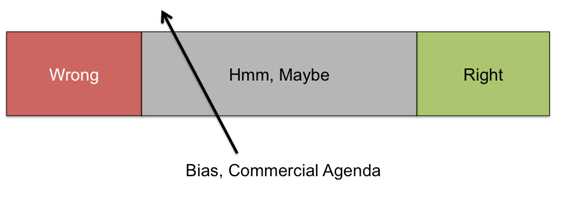Avoiding the audit-deal-cloud rinse cycle

Richard Spithoven (Top) and Patrick de Veer (Bottom) from b.lay. Videos coming soon on The ITAM Review.
I was lucky enough to visit Utrecht in the Netherlands recently to see the nice folks from b.lay, one of the winners of the ITAM Review 2015 Excellence Awards (Nominations are open for 2016 here). We spent some time recording videos in preparation for our conferences later this year; I look forward to sharing these with you over the coming months.
Squeezing out ambiguity in contracts
One of the interesting trends we discussed was that of customers explicitly detailing license measurement metrics in contracts, especially related to audits.
In layman’s terms: if you insist on auditing us, how will we measure consumption for that audit?
This is a really positive trend; customers detailing exactly how consumption is measured for license metrics, even going as far as detailing the exact executable or files that need to be measured.
This approach might seem a little extreme, but frankly software licensing is an unregulated industry and it is often difficult to tell the difference between genuine infringements of intellectual property and over zealous sales reps and biased auditors.
License metrics, product use rights and how to measure consumption should either be public domain or detailed in the contract. The benefits of this approach are:
- It reduces the opportunity for commercial agendas exploiting greyness in contracts
- It also sends a message to the business that we’ve contractually committed to measure something and we need the capabilities to manage it in order to manage the risk of the contract
An observation from research with the Campaign for Clear Licensing suggests that large software publishers, desperate for revenue, are exploiting the greyness in their (typically old and not fit for purpose) contracts.
If not scrutinized prior to purchase or reviewed regularly, contracts and license terms can become ambiguous and open to interpretation. When greyness exists and the customer is unprepared or unaware, software publishers can drive their own commercial agenda to exploit the greyness.

Ambiguity or greyness in contracts, if left unchecked, can be exploited to drive commercial agendas such as off loading unwanted shiny new cloud offerings.
Don’t fall for the ‘Audit-Deal-Cloud’ rinse cycle
Software publishers can’t make money from stable, feature rich perpetual licensing products in the longer term. A successful product kills the long-term business model.
Microsoft, IBM, SAP, Oracle and Adobe are all desperately trying to transition their business models to cloud subscriptions of some form. This is nothing to do with cloud or technology and is everything to do with share price. Shareholders like ongoing, predictable recurring revenue.
A great case study of this is Adobe who has a dated, mature set of products, they’ve done a great job of convincing customers to continue paying every year for software they already own by calling it ‘cloud’.
Greyness leaves you open to this cloud trick to cover up past mistakes, lack of knowledge or mismanagement of software.
The typical audit-deal-cloud rinse cycle:
- Publisher finds an excuse for audit, review or some other sniffing exercise
- Publisher finds sufficient weakness to make customer feel guilty, exploits holes in the customer defenses and builds a deal. Weaknesses might be ambiguous or misunderstood licensing terms, shortfalls or mismanagement by the customer.
- Publisher pushes cloud as a resolution even though the customer doesn’t need cloud
- Publisher has recurring cloud revenue (good for share price) and is seen to be shifting new product and relevant in the market place (good for share price)
If you fail to sharpen your contracts and continue to mismanage software, you’ll get lumbered with cloud product you don’t need.
Key things to ask before signing an agreement
- How will we measure consumption of this contract?
- What mechanisms, processes, and tools will we use to measure that consumption?
- Do we have sufficient internal expertise, tools, and bandwidth to do this – is it an ongoing commitment or occasional reporting?
- How will we ensure accuracy and act upon the outcome?
- Are we dependent on vendor tools / scripts to measure consumption or can we make our own assessment?
Do you agree? Can you recommend any other approaches for reducing greyness and avoiding getting sucked into cloud?
Can’t find what you’re looking for?
More from ITAM News & Analysis
-
ITAMantics - April 2024
Welcome to the April 2024 edition of ITAMantics, our monthly news podcast where we discuss the biggest ITAM stories from the last month. George is joined this month by AJ Witt and Ryan Stefani. Stories tackled ... -
Broadcom is removing expired VMware licences from its portal - take action now!
Hot on the heels of Broadcom’s announcement of the end of perpetual licences for VMware it has given customers barely a week to download any keys for licenses from its portal with expired support. This is ... -
Who Loses When Broadcom Wins?
News of a new Broadcom deal rarely arrives with great fanfare. The November 2023 VMware acquisition provoked open worry online and in business circles, with many critics wondering whether the former Hewlett-Packard spinoff’s reputation would prove ...